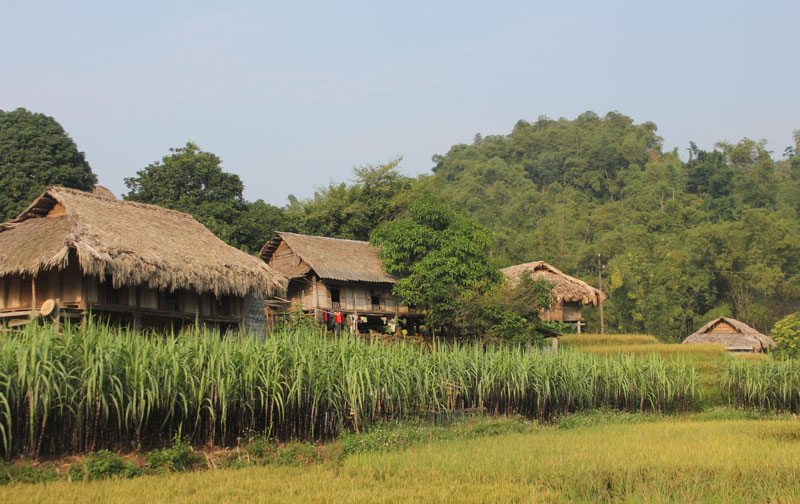
(HBO) – The northern mountainous province of Hoa Binh’s Cao Phong district is located on key waterways and roads that facilitate its own transport and socio-economic growth. These routes include 6A national highway, 12B and 435B provincial highways, and Hoa Binh lake that leads to Son La city.
Cao Phong is known for Muong
Thang, one of the four most famous areas in Hoa Binh inhabited by the Muong
ethnic community. Cao Phong is home to a range of tourist destinations such as Khanh
Pagoda historical site in Yen Thuong commune; Quoen Ang Pagoda in Tan Phong
commune; Cu Chinh Lan Monument in Binh Thanh commune; and Dau Rong Mountain
cave complex in Cao Phong town which was recognized as a national relic site by
the Ministry of Culture, Sports and Tourism in 2012.
Other destinations include
Hoa Son Thach, Phong Son, Nuoc (Water), Thanh Huy caves, Thuong Bong Lai
Temple, Coi Mountain Flower Garden, Muong ethnic minority group’s Giang Mo
village and community-based tourism establishments.
Eco and spiritual tours
are highlights of local tourism.

Giang Mo village in Binh
Thanh commune (Cao Phong) maintains typical features of the Muong ethnic
culture.
With its landscapes and
natural resources, Cao Phong is an ideal destination for community-based
tourism experience, cultural research, and weekend relaxation, among others.
However, the district’s tourism and services development has yet to be on par
with its potentials and advantages. In the first nine months of 2017, the
locality welcomed 256,687 tourists, including 1,506 foreigners. The tourism sector
generated 19.2 billion VND in revenues during the period. To make a
breakthrough in toruism, the district has designed a tourism development
project for 2016 – 2020, with a vision toward 2030.
Currently, Cao Phong is
implementing preferential policies and mechanisms to lure investment in
tourism, particularly in its key destinations such as Dau Rong mountain
ecotourism and spiritual tourism area and Hoa Binh lake./.
A diverse chain of eco-tourism and resort destinations concentrated in Hoa Binh city and the districts of Tan Lac, Da Bac, and Luong Son… Along with the launch of several key high-quality resort tourism projects, these developments have reshaped the landscape and enhanced the appeal of Hoa Binh as a travel destination.
Boasting diverse terrain, a mild climate, and rich natural resources, Cao Phong district is increasingly asserting its place on Vietnam’s tourism map, attracting both domestic and foreign visitors. The district is renowned for its stunning landscapes, majestic mountains, a crystal-clear hydropower lake, and the unique cultural identity of local ethnic groups.
With its pristine landscapes, unique cultural heritage of Muong ethnic minority, and an expanding range of visitor experiences, Tan Lac district of Hoa Binh has fast become a captivating destination for both domestic and international tourists.
Until now, Sung village in Cao Son commune, Da Bac district remains the only Dao ethnic community in Hoa Binh province to develop a community-based tourism model. Beyond its untouched natural landscapes, cultural identity serves as the cornerstone attraction for visitors.
Alongside the diverse cultural identities of the Kinh, Muong, Tay, Thai, Dao, and Mong ethnic people, Hoa Binh province is also renowned as the "capital" of the northwestern Vietnamese cuisine, offering unique and distinctive dishes. At festivals, during Lunar New Year (Tet), or on significant family or community occasions, special dishes are prepared, leaving a lasting impression on visitors.
A Phong Linh (Yellow Tabebuia) flower garden in Thang village, Thach Yen commune, Cao Phong district is currently in full bloom, drawing a large number of visitors.



